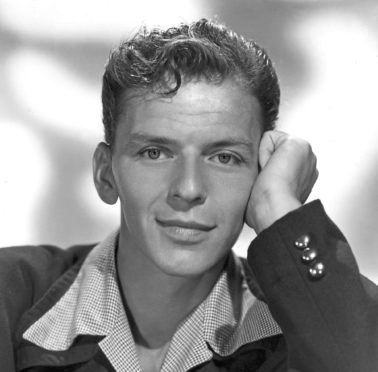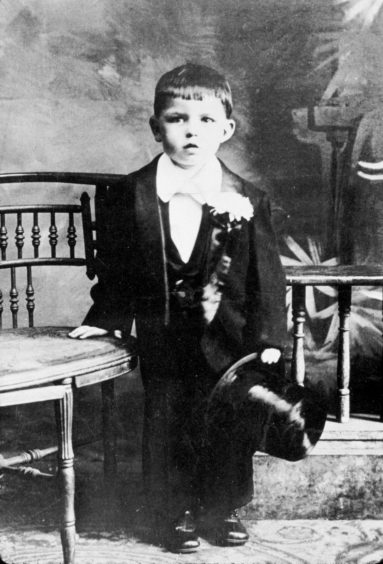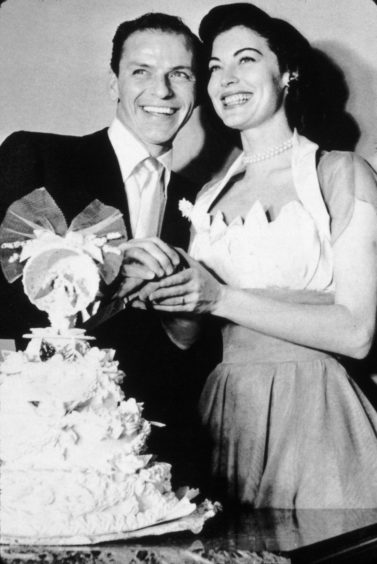
For a boy who only got his first singing job because he could drive the band around – a band who often used him as a punchbag – Frank Sinatra did OK in the end.
He was still a teenager when the trio, The 3 Flashes, let him join, mainly because he had a sports car to get them to gigs.
He was cocky, though, and soon became the focal point for the many delighted young ladies in the audience, and these things irritated the other three to the point that he received regular beatings.
None of it, however, put the young Sinatra off music or bands and throughout his entire incredible career he would always insist on being recorded with his band, not laying down vocals later over a recording.
Sinatra may have been the star, even in those teen days, but he never took for granted the wonderful songwriters and musicians around him who shaped his career.
A boy in a hurry, it didn’t take him long to outgrow the group, who changed their name to The Hoboken Four when they added him.
By the time he was in his mid-20s, he’d had his first solo hit single but it would be 1946 before the first Frank Sinatra album, The Voice Of Frank Sinatra.
Born in Hoboken, New Jersey, on December 12 1915, he had barely been out of diapers before he was dreaming of recording albums.
The Voice Of Frank Sinatra fulfilled his dream at long last.
That first full-length LP featured such classics as You Go To My Head and These Foolish Things. It made history, as the first pop album released at 33-and-a-third rpm.
It totalled just 24 minutes, but it showcased a voice that the whole world would fall in love with for all time.
Sinatra, however, wasn’t just in it for the music, even if song was his first and biggest love – with his looks and style, Hollywood beckoned, too, and he was already putting in appearances in films.
Indeed, one critic pointed out that, far from being a singer who just did a few movies as a sideline, the Sinatra film career could stand alone, being “as varied, impressive and rewarding as that of any other Hollywood star”.
For a guy who had absolutely no training in how to use his voice or how to act in front of the cameras, it all came ridiculously easy and natural for Frank Sinatra.
He had appeared as a singer in movies like Las Vegas Nights and Ship Ahoy, with Tommy Dorsey, and by the time that first album came out he was also appearing – as himself – in Till The Clouds Roll By.
A fictionalised tale of composer Jerome Kern, the man who gave us Ol’ Man River, Smoke Gets In Your Eyes and literally hundreds of other classics, the great man himself helped in making it but died before it was complete.
He would have been impressed with the young Sinatra, who would certainly do great versions of at least a dozen Kern songs over the years to come.
Everyone from Aretha Franklin to Bono, Charles Aznavour to Barbra Streisand would feature on duets with Sinatra, but surely one of his wackiest came in 1947.
This was in the movie It Happened In Brooklyn, where he duetted with comic legend Jimmy Durante on The Song’s Gotta Come From The Heart.
Frank’s third movie for MGM, it did well and he clearly loved appearing alongside one of America’s all-time best funny men.
Songs By Sinatra, his second album from that same year, featured recordings from the previous three years.
The Irving Berlin song How Deep Is The Ocean was placed alongside Over The Rainbow and That Old Black Magic, so it was quite a mix but it worked and sold well.
His career was just revving up, and Frank Sinatra was already a guaranteed hitmaker on record and in film.
Swing And Dance With Frank Sinatra was the album that brought in a new decade, and this 1950 classic was also his sixth and final LP for the Columbia label.
Cole Porter’s You Do Something To Me was one of the stand-out numbers, and the recording was arranged and conducted by George Siravo.
He had worked closely with Glenn Miller and Gene Krupa and later arranged for Doris Day, Tony Bennett, Vic Damone and others, and it would be no surprise to see Sinatra lean on him again in future work.
After Columbia, in fact, Frank didn’t start recording for Capitol for three years, and it was Siravo at the helm again for the awesome Songs For Young Lovers, released in 1954.
Incredible as it sounds to music fans today, the whole album lasted just under 22 minutes, but when a record is this good, you simply play it over and over.
My Funny Valentine, I Get A Kick Out Of You, A Foggy Day, They Can’t Take That Away From Me… these were songs that could’ve been written for Sinatra, and boy, did he do them justice.
It was the first of many truly classic albums for Frank, records where there are no filler tracks but each song is a belter.
For years to come, he would get in a groove where he seemed to churn out such albums with ease.
Just, for instance, look at his next one, also in 1954, Swing Easy!. Some reckon it’s his greatest ever, though personally the one that came next, In The Wee Small Hours, beats them all.
But then, I like the heartbreakers rather than the swingin’ dance numbers.
One thing’s for sure. Swing Easy! was another classic and still is. And it was even shorter, at less than 20 minutes!
Just One Of Those Things and I’m Gonna Sit Right Down (And Write Myself A Letter) was a pretty good way to open an album, and Get Happy and All Of Me wasn’t a bad way to close it either.
If his music career was going into the stratosphere, his movie world wasn’t bad either.
The previous year had seen the release of From Here To Eternity, a massive global hit.
Even if the scene with Burt Lancaster and Deborah Kerr getting passionate in the water was the iconic moment, Sinatra played a significant role.
It made an absolute fortune, and further bolstered his acting credentials. At this point in the 1950s, everything you got Sinatra involved with turned to gold.
The year 1955 is a fine example, with that other classic album we already mentioned and another classic movie.
In The Wee Small Hours, his ninth studio album, stretched to a more impressive 49 minutes, and it sounds as sensational today as it did back then.
Sinatra had separated from his first wife, Nancy Barbato, on Valentine’s Day 1950 and they divorced in late 1951.
Within days, he had married Ava Gardner, with whom he was utterly besotted.
Both, however, weren’t so besotted that they didn’t seek love elsewhere, too, but their extramarital pursuits made both jealous of each other.
By the time he came to record In The Wee Small Hours, life at home was not a happy thing, and he decided to make a whole album full of songs about his misery.
Sinatra was unusual and ahead of his time in the way he looked at singles and albums. He looked at some songs as obvious singles, destined for radio or jukeboxes.
But he looked at other songs as part of a larger package, and would gather enough of them to make a whole album based around a theme.
The theme for this one was not the joys of being in love or dancing and swinging.
This one was all about misery and heartache, being the lone drunk at the bar at 2am, with only the exhausted barman to listen to your woes.
They say the man brought himself to tears at the microphone while making it, and he would record well into the actual wee small hours, rather than go home.
A music writer of the time reported seeing him at the end of one long session, flopping on to a chair with a cup of coffee and remarking to the studio’s night janitor that they should have been plumbers instead of working these crazy hours.
Selfishly speaking, Sinatra’s misery and heartbreak would be worth it in the end, for us listeners if not for him – it’s still one of the greatest albums ever made by anyone in any era.
As you’ll see in next week’s second part of our look at Frank Sinatra, he would prove himself more than capable of maintaining these highest of standards, in music and in film.

Enjoy the convenience of having The Sunday Post delivered as a digital ePaper straight to your smartphone, tablet or computer.
Subscribe for only £5.49 a month and enjoy all the benefits of the printed paper as a digital replica.
Subscribe © Snap/Shutterstock
© Snap/Shutterstock  © Snap/Shutterstock
© Snap/Shutterstock 